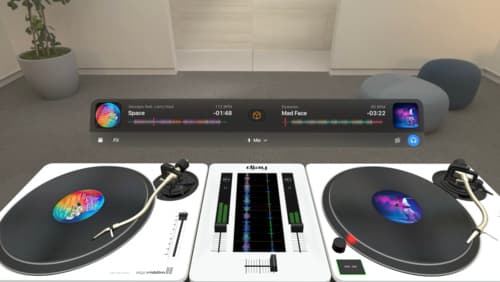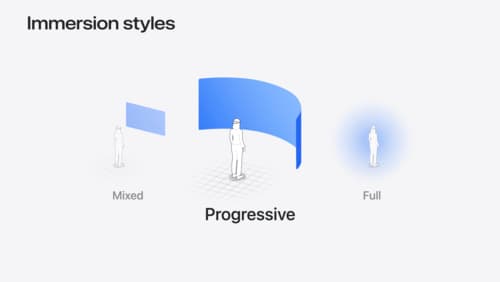How can I design spatial computing apps?
Asked on 2024-10-02
1 search
To design spatial computing apps, you can leverage the VisionOS platform, which is built on the foundation of macOS, iOS, and iPadOS. Here are some key strategies and tools to consider:
-
Use of SwiftUI and RealityKit: These are core frameworks for developing spatial apps. SwiftUI allows you to create a new type of scene called a "volume," which is great for adding 3D objects and scenes with rich interactions. RealityKit provides powerful tools for creating immersive experiences.
-
Spatial Tracking and Interaction: VisionOS supports natural input methods, including eyes, hands, and voice, which can be used to create intuitive interactions. You can set up spatial tracking to understand hand and environment data, which is crucial for apps that require precise user interactions.
-
Designing for Immersive Spaces: Consider how your app can take advantage of the third dimension by displaying information in clever ways and providing playful interactions. You can use immersive spaces to expand your app's functionality beyond traditional 2D interfaces.
-
Creating Photorealistic and Interactive Content: For apps that involve 3D models, ensure that assets are photorealistic and of high visual quality. Use animations to replicate real scenarios and provide ways to manipulate models in ways that would be cumbersome in the real world.
-
Optimizing for the Spatial Web: When designing for the spatial web, consider how to provide immersive visual and audio content, such as spatial and panorama photos, rich 3D models, and spatial soundscapes.
For more detailed guidance, you can refer to the following sessions from WWDC 2024:
- Platforms State of the Union (VisionOS section)
- Design great visionOS apps (Intentional chapter)
- Build a spatial drawing app with RealityKit (Set up spatial tracking chapter)
- Dive deep into volumes and immersive spaces (Volumes chapter)
These sessions provide insights into the tools and techniques for creating compelling spatial computing experiences.

Design great visionOS apps
Find out how to create compelling spatial computing apps by embracing immersion, designing for eyes and hands, and taking advantage of depth, scale, and space. We’ll share several examples of great visionOS apps and explore how their designers approached creating new experiences for the platform.

Dive deep into volumes and immersive spaces
Discover powerful new ways to customize volumes and immersive spaces in visionOS. Learn to fine-tune how volumes resize and respond to people moving around them. Make volumes and immersive spaces interact through the power of coordinate conversions. Find out how to make your app react when people adjust immersion with the Digital Crown, and use a surrounding effect to dynamically customize the passthrough tint in your immersive space experience.

Optimize for the spatial web
Discover how to make the most of visionOS capabilities on the web. Explore recent updates like improvements to selection highlighting, and the ability to present spatial photos and panorama images in fullscreen. Learn to take advantage of existing web standards for dictation and text-to-speech with WebSpeech, spatial soundscapes with WebAudio, and immersive experiences with WebXR.
